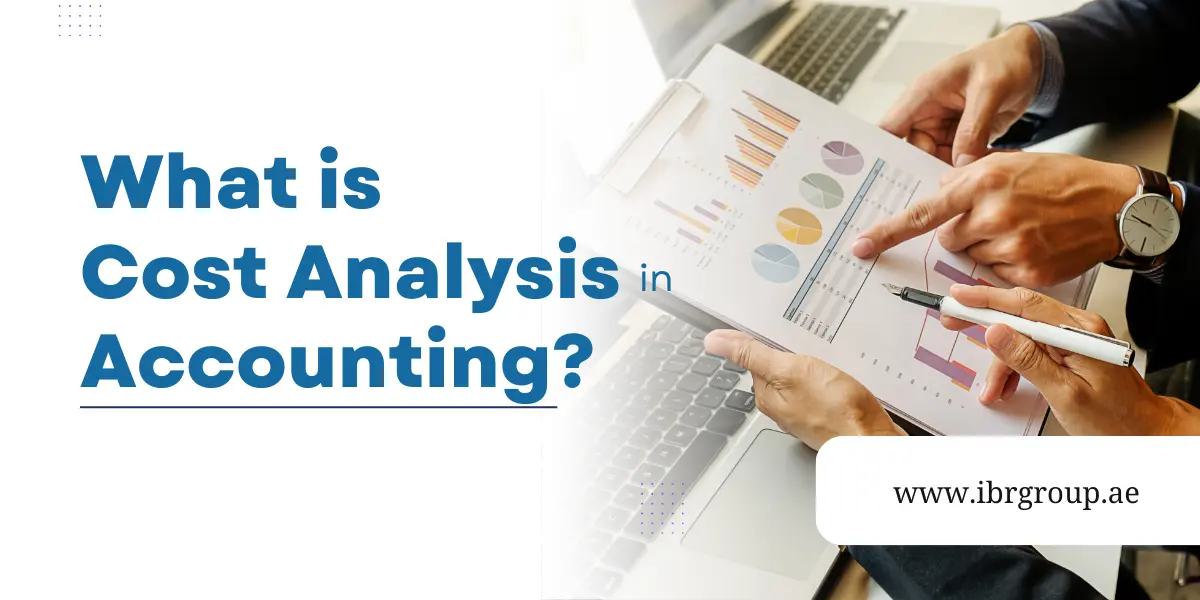
What is cost analysis in accounting?
What is cost analysis in accounting?
Cost analysis is a basic accounting concept that is essential to corporate and organization decision-making processes. It entails evaluating the costs associated with manufacturing goods or services and is closely related to cost-benefit analysis. The topic of cost analysis, its importance, and its relationship to cost-benefit analysis will all be covered in this blog.
An Overview of Cost Analysis
Different Cost Types:
- Fixed Costs: Expenses that stay the same within a given range, independent of output or sales levels. Rent, permanent employee salary, insurance premiums, and fixed asset depreciation are a few examples.
- Variable Costs: Costs that vary directly and proportionately with the volume of sales or production are known as variable costs. Raw materials, direct labor expenses (for hourly workers), commissions from sales, and transportation expenses are a few examples.
- Semi-Variable Costs (Mixed Costs): Costs with both a fixed and a variable component are referred to as semi-variable costs, or mixed costs. They consist of a variable component that varies according to production or sales and a base cost that stays the same. Examples include telephone charges (base fee + usage charges), utilities (gas, water, and electricity), and maintenance expenses (set contract plus per-service rates).
- Direct Costs: Expenses that are simply and directly linked to a particular good, service, or activity. Examples include the cost of developing software for a particular application, the direct labor required to assemble a product, and the raw materials utilized in its manufacturing.
- Indirect Costs (Overhead): Expenses that cannot be linked directly to a particular good, service, or activity are known as indirect costs (overhead). These expenses help the firm run as a whole. Examples include office utilities, marketing costs, administrative staff pay, and manufacturing rent.
- Opportunity Cost: The price paid for passing up the next best option while making a choice. It’s the advantage you might lose by selecting one course of action over another. It is essential for decision-making even though it is not a typical accounting expense.
- Sunk Cost: Sunk costs are expenses that cannot be recouped after they have already been incurred. Since sunk costs have no bearing on future results, they shouldn’t affect actions made now.
The Importance of Cost Evaluation
• Effective Decision Making: Cost analysis offers essential data for well-informed business decisions, including make-or-buy choices, pricing strategies, product mix decisions, and resource allocation.
• Pricing Strategy: Establishing reasonable prices that cover costs, turn a profit, and maintain competitiveness requires an understanding of costs. Accurate cost data is essential for competitive pricing, value-based pricing, and cost-plus pricing.
• Budgeting and Forecasting: The creation of realistic budgets and financial projections depends on cost analysis. Businesses may manage cash flow, prepare for future spending, and obtain capital if necessary with the help of accurate cost estimates.
• Performance Evaluation: Businesses can assess their performance and pinpoint areas for development by comparing actual and budgeted expenses. Variance analysis can be used to identify inefficiencies and areas where costs might be cut.
• Cost control: By examining expenses, companies can spot inefficiencies and waste, put cost-cutting strategies into place, and raise overall profitability.
Cost-Benefit Evaluation
An essential component of cost-benefit analysis is cost analysis. A decision-making framework known as cost-benefit analysis weighs the overall predicted costs and benefits of a course of action or investment.
• Evaluating expenditures: Businesses can determine the financial feasibility of expenditures in new technology, equipment, marketing initiatives, or expansion projects by using cost-benefit analysis.
• Project Selection: Cost-benefit analysis enables companies to rank the projects that provide the best return on investment and fit with strategic goals when presented with a number of possible initiatives.
• Resource Allocation: Allocating limited resources (such as funds and staff) to the most promising initiatives or activities can be guided by cost-benefit analysis.
• Policy Decisions: Governments and other organizations frequently use cost-benefit analysis to weigh the advantages and disadvantages of various programs and policies.
An essential accounting technique that sheds light on a company’s profitability, efficiency, and financial stability is cost analysis. It gives businesses the ability to set competitive prices, streamline operations, and make well-informed decisions. Furthermore, cost-benefit analysis, a procedure that assesses the possible results of certain expenditures or activities, is strongly related to cost analysis. Businesses can effectively spend their resources and increase their success in a competitive environment by comprehending the relationship between costs and benefits with cost analysis services from IBR Group.
